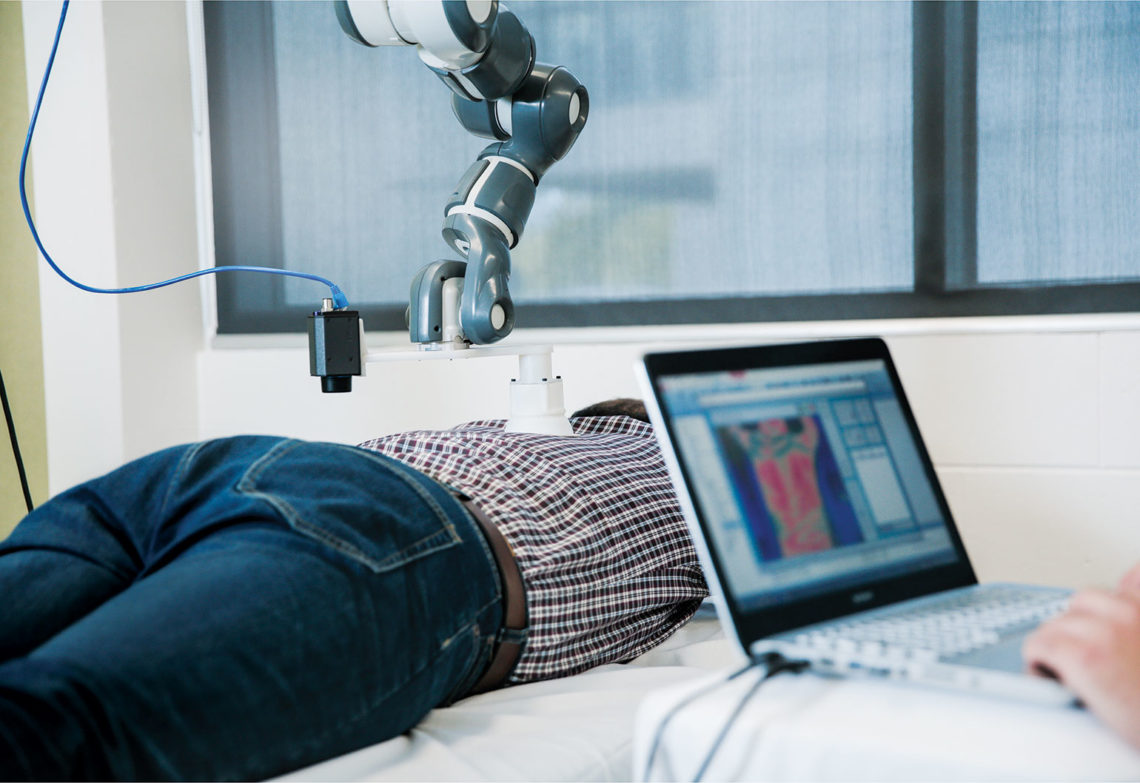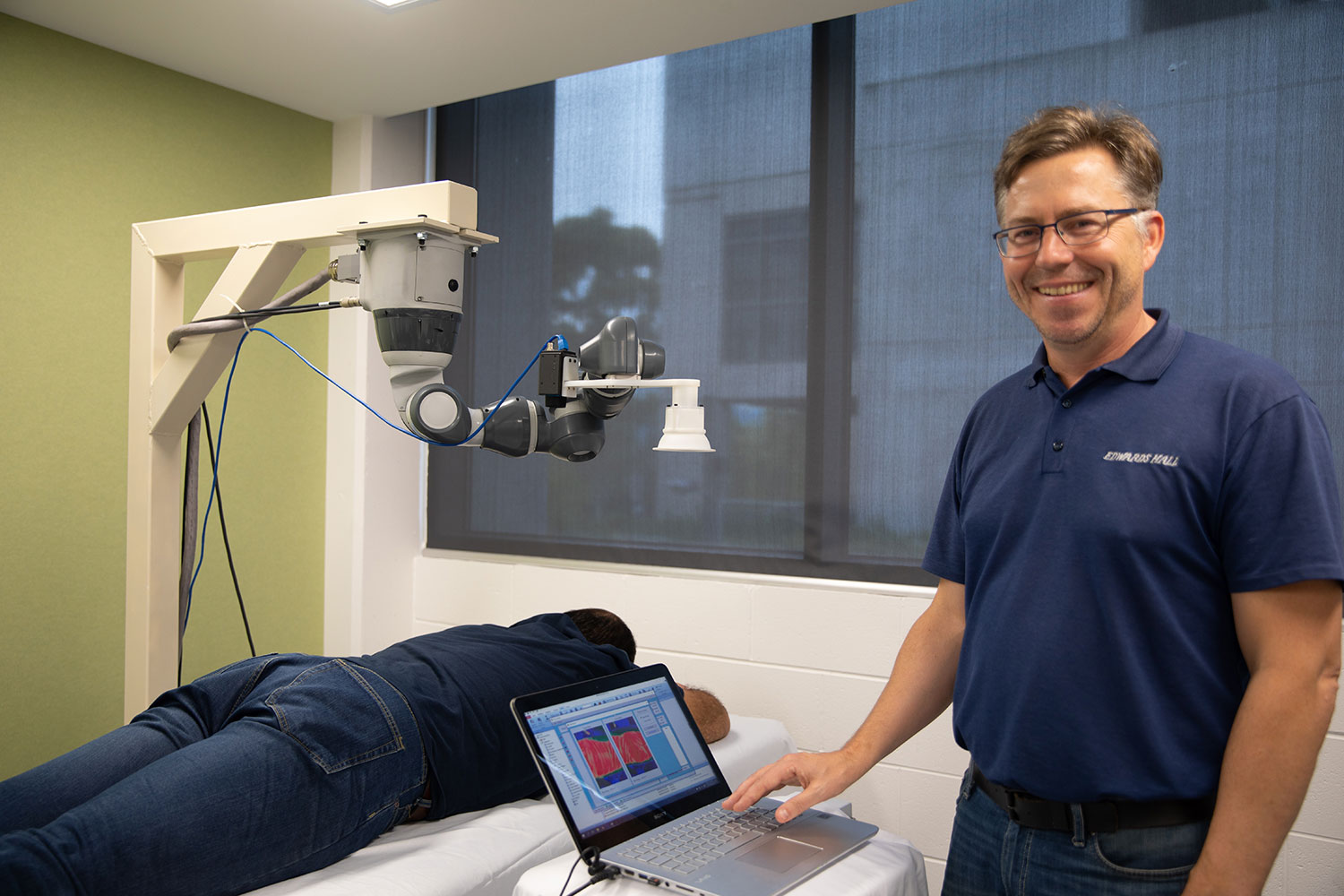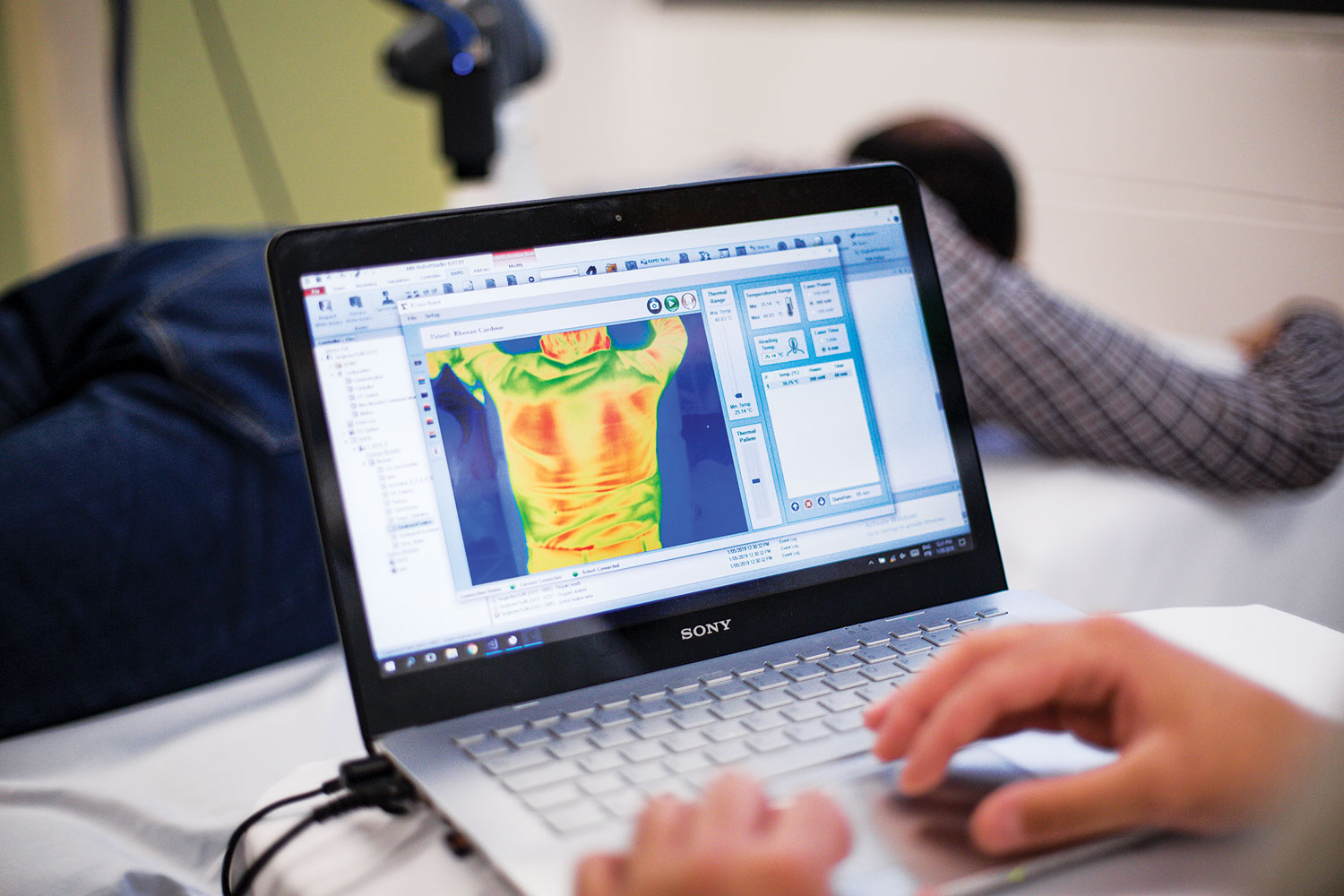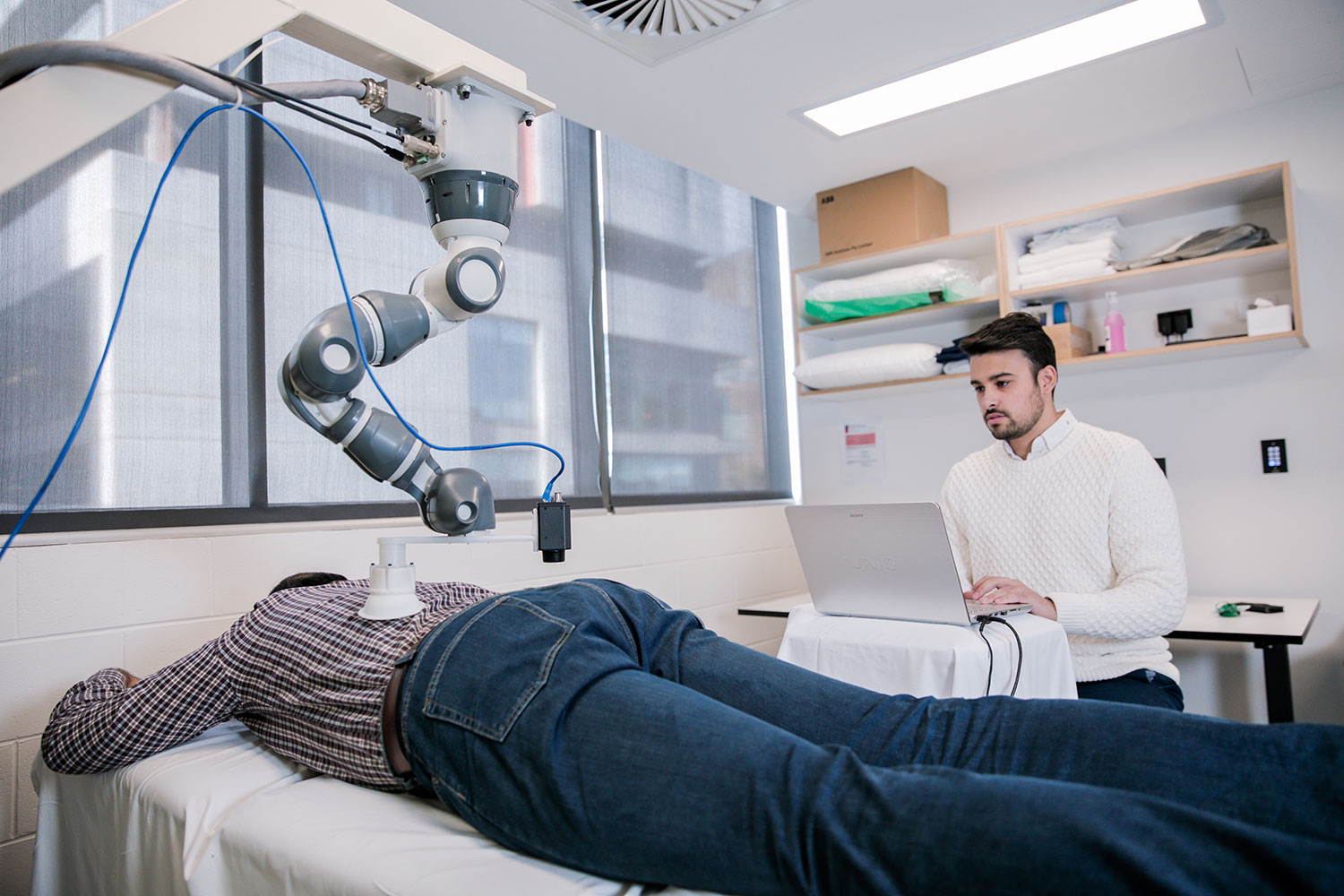A laser-based medical therapy is attracting increasing attention from researchers. One engineer wants to put robots in charge of using it.
Photobiomodulation is a medical treatment that uses red and near-infrared light to reduce inflammation and stimulate healing.
While practitioners have seen its potential in a range of uses, it has shown particular promise in treating chronic pain afflictions.
Now, engineers from Swinburne University and a startup called IR Robotics hope to make the treatment cheaper and more easily available. Their plan: put robots in charge of administering it.
Dr Mats Isaksson, a roboticist and Senior Lecturer at Swinburne, said there are a number of advantages to automating the photobiomodulation process.
“It is much easier to digitise the whole treatment, so that you can remember exactly what you did before and what effect it had,” he told create.
“In addition to that, there will be a massive cost saving because the patient can just go there and, basically, he doesn’t really need the therapist anymore.”
Working with IR Robotics, Isaksson has created a robot capable of locating hot spots on a patient with neck or back pain, and then administering photobiomodulation therapy to relieve the symptoms.
“It is fully automated,” he promised.
“There might be 10 robots in the room and only one supervisor there to see that things are going as they’re supposed to.”
But in reality, the task of any human involved would be to make sure the patient felt comfortable.
“Maybe help the patient to, you know, get on to the bed,” Isaksson said.
“Tell them there is nothing to be worried about, things like that. Basically, nothing about the treatment itself; that could all be automated.”
This approach doesn’t depart significantly from the current photobiomodulation technique, but it is much more efficient.
“Traditionally, what they do is they let a patient go into one room, they scan him with an infrared camera and use that to find that spot where the temperature is a little bit higher — that indicates inflammation,” Isaksson explains.
“And even if the pain is not always exactly where that is, they want to do the treatment where they find this inflammation spot.”
According to Swinburne, the technique the camera uses to locate inflammation is similar to that used by cricket umpires and broadcasters to determine whether a ball has hit the bat or not.
When the task is given to a robot, however, the process of locating inflammation and treating it can take place simultaneously.
“If you have equipment that can both measure the result of the treatment and perform the treatment, and you have a robot that can actually go exactly into the spot you want to, you get high precision — you can make it faster,” Isaksson said.
It also means that the robot can remember the precise place to apply treatment.
One of the most substantial challenges for Isaksson was ensuring that his robots could operate safely around humans.
“It is an interesting research area called collaborative robots,” he said.
“[These] are standard, low-cost industrial robots that are designed to be safe working together with humans. This is achieved by making them more compliant and limiting their speed. This way it can be guaranteed that a collision is not harmful.”
That removes the need for a lot of the precautionary features that standard industrial robots require.
“You don’t need to put a robot in a cage and have all this safety equipment,” Isaksson said.
“You can pretty much just bring it in there, teach it to do something, and it can work safely surrounded by people.”
Isaksson’s robot is quite gentle; a demonstration video shows it harmlessly colliding with his face and gently coming to a stop as he sits up and bumps his head on it.
“I trust the technology, which I will not do with all robots,” he said.
“This one is small and safe and just strong enough to perform the wanted task. If it was a larger robot that can carry more weight, it would have a larger chance of hurting you, even if it’s collaborative.”
Another benefit to the technology is that it could give rural and remote communities access to medical services that are tough to find outside big cities. And considering the cost, that could have a big impact.
“Our whole system might be in the right range of $50,000,” Isaksson said.
“Which is very cheap for a medical system.”
General practitioner
One advantage with the robotic platform developed at Swinburne is that it can easily be adapted for other uses.
“That’s a good thing with robots — they are very flexible,” Isaksson said.
“As long as the robot has the payload capacity to hold any kind of tool — in this case, the laser and the camera — you can pretty much do anything as long as you have the reach to reach anywhere on the patient.”
Isaksson is looking at adapting the technology for ultrasound applications such as melanoma detection, as well as measuring heart echoes and even using it for massages.
“I’m very excited continuing with different projects, using a similar robot platform for other medical applications,” he said.






